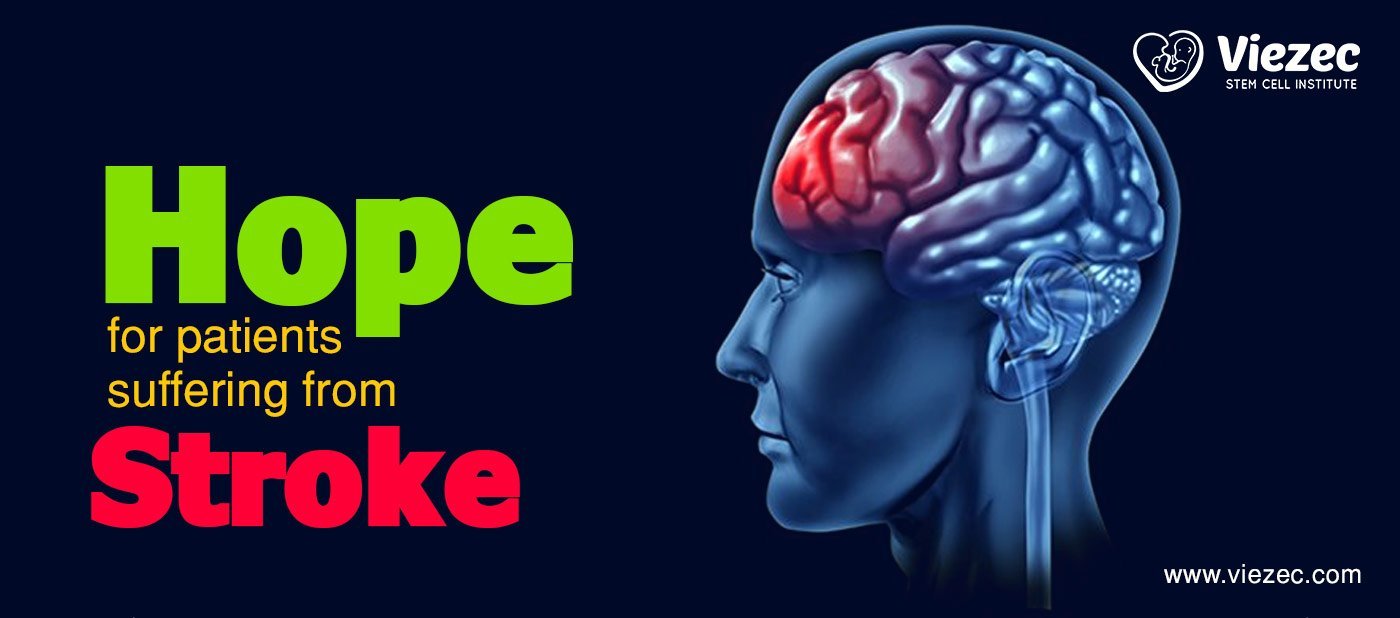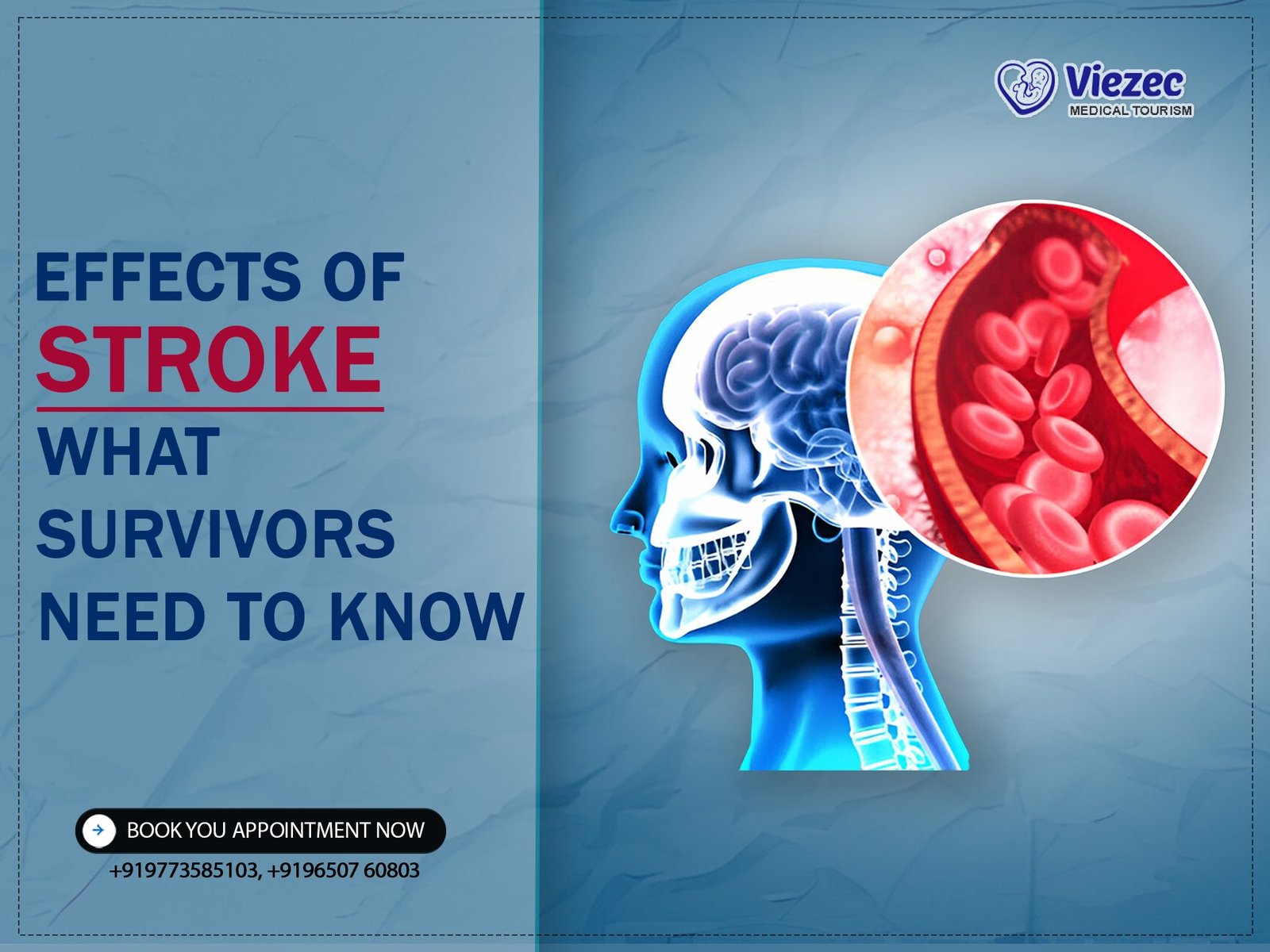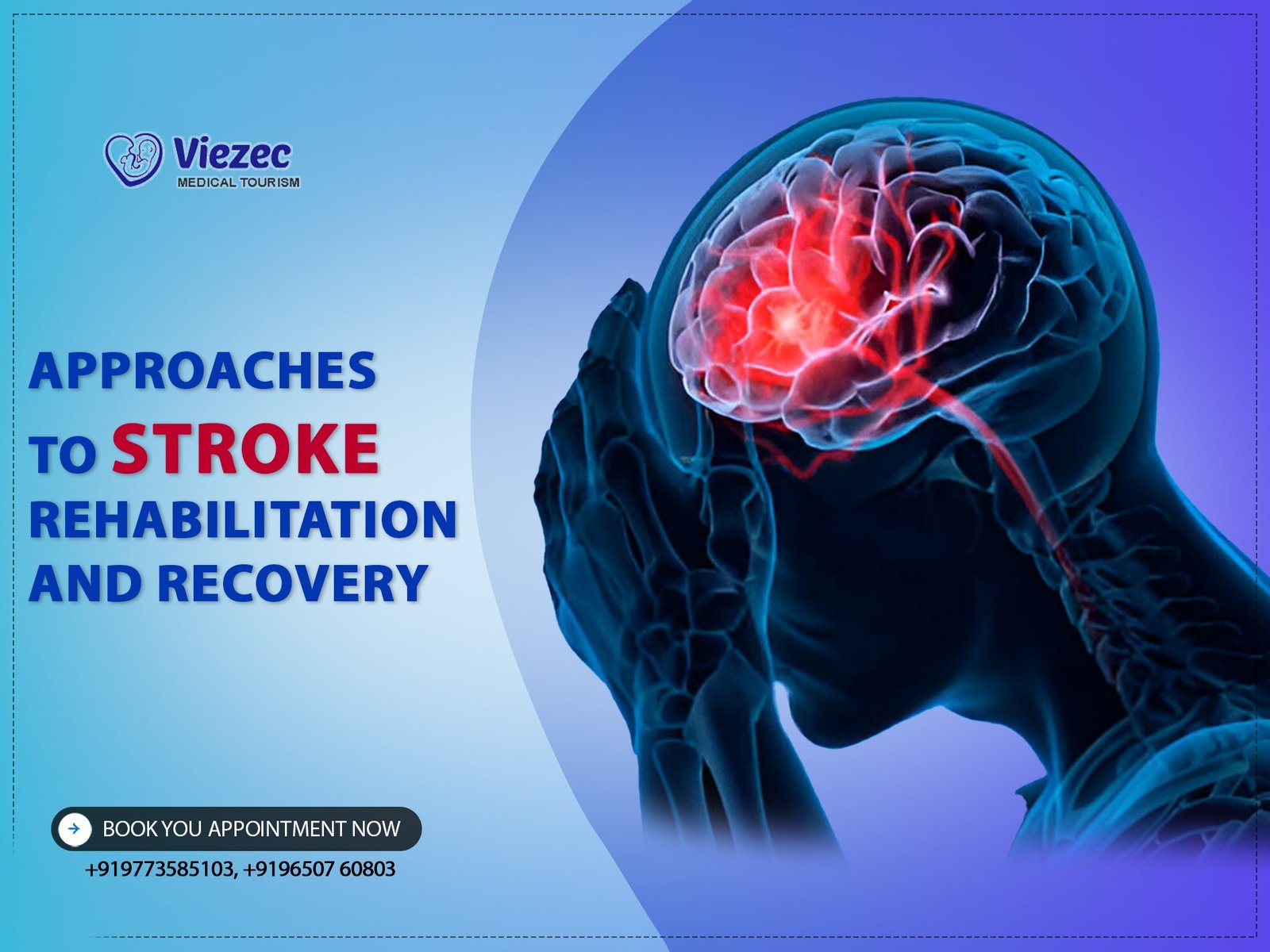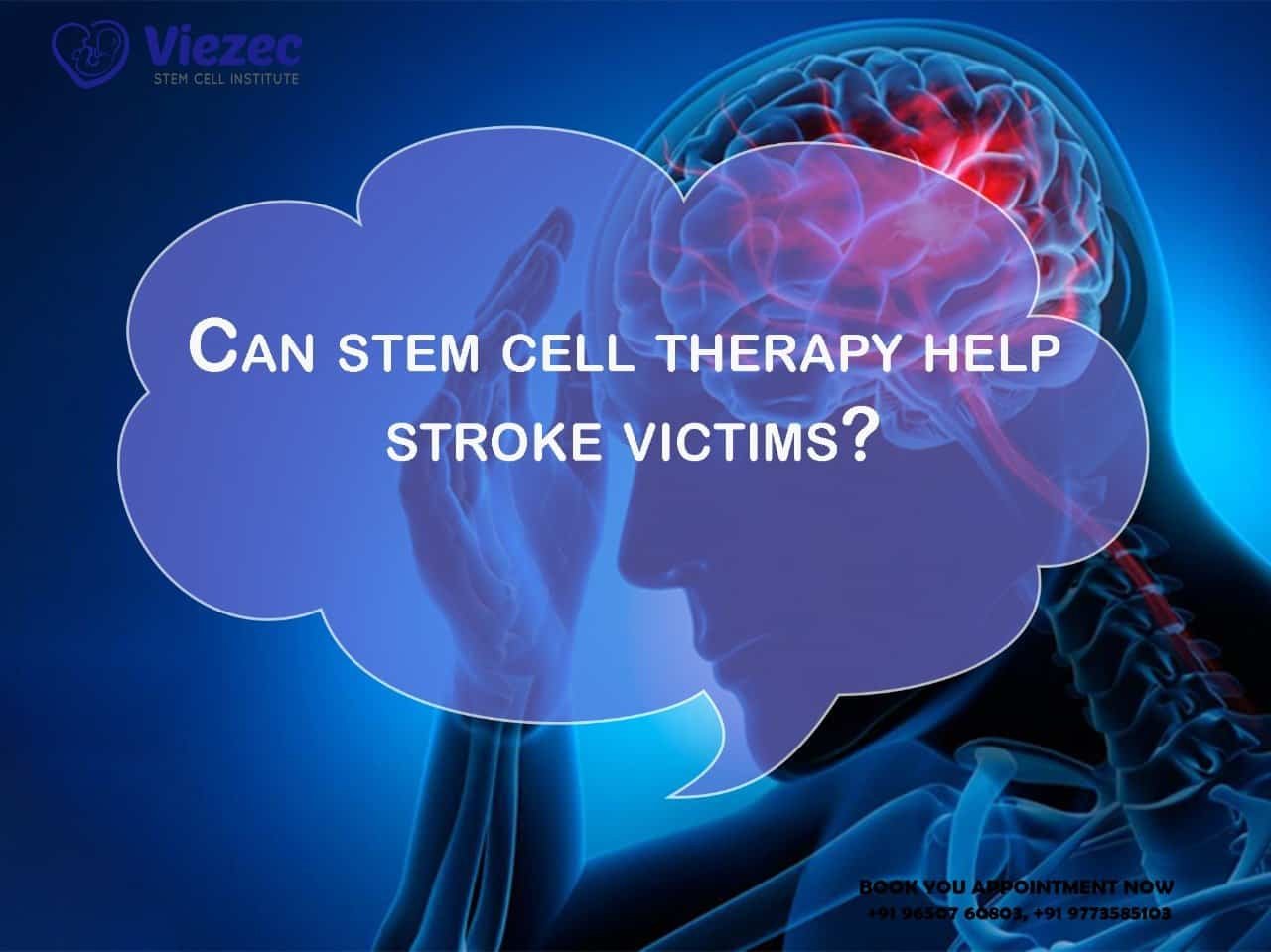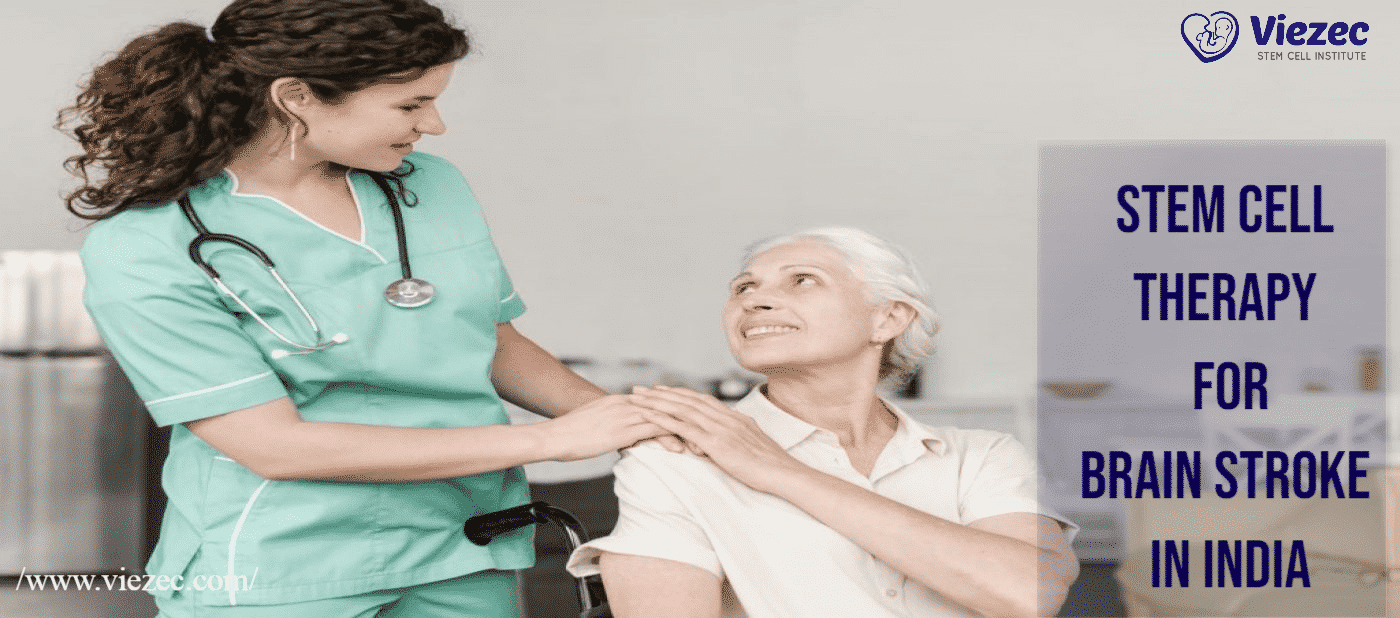A stroke is a medical emergency that occurs when the blood supply to part of the brain is interrupted or reduced, preventing brain tissue from getting oxygen and nutrients. This can result in brain cells beginning to die within minutes. Strokes can lead to long-term disabilities, affecting speech, movement, and cognitive functions. Understanding the nature and implications of stroke is crucial for effective treatment and rehabilitation. In India, stroke is a significant health concern, with increasing cases each year, highlighting the need for advanced treatment options.
Introduction to Stem Cell Therapy
Stem cell therapy is an innovative medical treatment that uses stem cells to repair or replace damaged cells and tissues. Stem cells have the unique ability to develop into various cell types and possess regenerative properties, making them a promising option for treating a range of diseases and injuries. In the context of stroke, stem cell therapy aims to repair brain damage, promote recovery, and improve the quality of life for patients. This therapy represents a significant advancement in medical science, offering new hope for stroke survivors.
Importance of Stem Cell Therapy in Stroke Treatment
The significance of stem cell therapy in stroke treatment lies in its potential to address the limitations of conventional therapies. Traditional treatments for stroke primarily focus on preventing further damage and managing symptoms. In contrast, stem cell therapy aims to regenerate damaged brain tissue and restore lost functions. This approach can potentially reduce the long-term impact of a stroke, enhance recovery rates, and improve overall patient outcomes. Given the increasing prevalence of stroke and its debilitating effects, stem cell therapy offers a promising avenue for more effective and comprehensive treatment.
Understanding Stroke
Types of Stroke
Ischemic Stroke
Ischemic stroke is the most common type, accounting for about 85% of all strokes. It occurs when a blood clot obstructs a blood vessel supplying blood to the brain. This blockage can be caused by a thrombus (a clot forming in the brain) or an embolus (a clot traveling from another part of the body). The lack of blood flow leads to brain cell death and subsequent loss of brain function. Immediate medical intervention is crucial to restore blood flow and minimize brain damage. Treatments may include medications, clot removal procedures, and lifestyle changes to prevent recurrence.
Hemorrhagic Stroke
Hemorrhagic stroke occurs when a blood vessel in the brain bursts, leading to bleeding within or around the brain. This type of stroke is less common but more severe than ischemic stroke. The bleeding can cause increased pressure on the brain tissue, leading to significant damage and complications. Common causes include high blood pressure, aneurysms, and blood vessel abnormalities. Treatment focuses on controlling the bleeding, relieving pressure, and addressing the underlying cause. Surgery may be required in some cases to repair the damaged blood vessels and prevent further complications.
Causes of Stroke
Strokes can result from various risk factors, including high blood pressure, diabetes, high cholesterol, smoking, and a sedentary lifestyle. Other contributing factors may include heart disease, atrial fibrillation, and a family history of stroke. Unhealthy diets, excessive alcohol consumption, and obesity can also increase the risk. Identifying and managing these risk factors is crucial for stroke prevention. Regular health check-ups, a balanced diet, regular exercise, and avoiding smoking and excessive alcohol intake can significantly reduce the risk of stroke.
Symptoms and Diagnosis
The symptoms of a stroke often appear suddenly and may include numbness or weakness in the face, arm, or leg, especially on one side of the body, confusion, trouble speaking or understanding speech, vision problems in one or both eyes, difficulty walking, dizziness, loss of balance or coordination, and severe headache with no known cause. Early diagnosis is essential for effective treatment. Diagnostic tools include physical examinations, imaging tests such as CT scans and MRIs, and blood tests to determine the type and cause of the stroke. Prompt medical attention can significantly improve the chances of recovery.
Stem Cell Therapy: An Overview
What are Stem Cells?
Stem cells are the body’s raw materials from which all other cells with specialized functions are generated. Under the right conditions, stem cells divide to form more cells, which are either new stem cells (self-renewal) or specialized cells (differentiation) with specific functions. In many tissues, they serve as a sort of internal repair system, dividing essentially without limit to replenish other cells. Stem cells offer significant potential for regenerative medicine due to their ability to differentiate into various cell types and repair damaged tissues.
Types of Stem Cells
There are several types of stem cells, including embryonic stem cells, adult stem cells, and induced pluripotent stem cells (iPSCs). Embryonic stem cells are derived from early-stage embryos and can differentiate into any cell type in the body. Adult stem cells, found in various tissues like bone marrow and fat, have a more limited differentiation potential. Induced pluripotent stem cells are genetically reprogrammed adult cells that behave like embryonic stem cells. Each type of stem cell has unique properties and potential applications in medical treatments.
Sources of Stem Cells
Stem cells can be sourced from different parts of the body and from different developmental stages. Embryonic stem cells are obtained from embryos, typically those created in vitro for fertility treatments. Adult stem cells are harvested from tissues such as bone marrow, adipose tissue, and blood. Induced pluripotent stem cells are created in the laboratory by reprogramming adult cells to an embryonic-like state. Each source has its advantages and challenges, and the choice of stem cell type depends on the specific medical application and ethical considerations.
Mechanism of Stem Cell Therapy
Stem cell therapy involves the transplantation of stem cells into a patient to replace or repair damaged tissues. These cells have the ability to differentiate into the required cell types and integrate into the patient’s tissues, promoting healing and regeneration. The mechanism of action includes reducing inflammation, modulating the immune response, and releasing growth factors that support tissue repair. This multifaceted approach makes stem cell therapy a promising treatment for various conditions, including stroke, where it can potentially restore lost neurological functions.
Benefits of Stem Cell Therapy
The benefits of stem cell therapy are vast and include the potential to regenerate damaged tissues, reduce inflammation, and improve functional recovery. For stroke patients, this means the possibility of regaining lost motor skills, speech, and cognitive functions. Stem cell therapy can also reduce the risk of secondary complications by promoting overall brain health and recovery. Furthermore, as a minimally invasive procedure, it offers a safer alternative to more invasive surgical options. The ongoing research and clinical trials continue to uncover new benefits and applications of stem cell therapy.
How Stem Cell Therapy Works for Stroke
Repair and Regeneration of Damaged Tissues
Stem cell therapy for stroke focuses on repairing and regenerating the damaged brain tissues caused by the stroke. The transplanted stem cells can differentiate into neurons and other brain cells, replacing the cells that were lost or damaged during the stroke. This process can help restore the structural integrity of the brain and improve its functionality. The ability of stem cells to promote neurogenesis and synaptic plasticity plays a crucial role in the recovery process, offering hope for significant improvements in motor and cognitive functions.
Reduction of Inflammation and Promotion of Healing
Inflammation is a common response to stroke, leading to further damage to brain tissues. Stem cell therapy can help reduce this inflammation by modulating the immune response and releasing anti-inflammatory factors. This reduction in inflammation creates a more favorable environment for healing and recovery. Additionally, stem cells release various growth factors and cytokines that promote tissue repair and regeneration. This dual action of reducing inflammation and promoting healing makes stem cell therapy an effective treatment option for stroke.
Potential for Functional Recovery
The ultimate goal of stem cell therapy for stroke is to achieve functional recovery, allowing patients to regain lost abilities and improve their quality of life. By repairing damaged brain tissues and reducing inflammation, stem cell therapy can enhance neural plasticity and connectivity, leading to improvements in motor skills, speech, memory, and other cognitive functions. The potential for functional recovery varies among patients, depending on factors such as the severity of the stroke, the timing of the treatment, and individual patient characteristics. However, the overall prospects for recovery with stem cell therapy are promising.
Types of Stem Cells Used in Stroke Therapy
Embryonic Stem Cells
Embryonic stem cells (ESCs) are derived from early-stage embryos and have the unique ability to differentiate into any cell type in the body. This pluripotency makes them a powerful tool for regenerative medicine, including stroke therapy. However, the use of ESCs is associated with ethical and regulatory challenges, as well as the potential for immune rejection. Despite these challenges, ongoing research continues to explore the potential of ESCs in treating stroke and other neurological conditions, aiming to develop safe and effective protocols for their use.
Adult Stem Cells
Adult stem cells, also known as somatic stem cells, are found in various tissues of the adult body, such as bone marrow, adipose tissue, and blood. These cells have a more limited differentiation potential compared to embryonic stem cells but are still capable of generating multiple cell types. In stroke therapy, adult stem cells, particularly mesenchymal stem cells (MSCs), are widely used due to their ability to promote tissue repair and modulate the immune response. Their use is considered safer and less controversial than embryonic stem cells.
Induced Pluripotent Stem Cells (iPSCs)
Induced pluripotent stem cells (iPSCs) are adult cells that have been genetically reprogrammed to an embryonic stem cell-like state. This reprogramming endows them with the ability to differentiate into any cell type, similar to embryonic stem cells. iPSCs offer a promising alternative for stem cell therapy as they bypass the ethical concerns associated with embryonic stem cells and reduce the risk of immune rejection. In stroke therapy, iPSCs can be used to generate neurons and other brain cells, facilitating the repair and regeneration of damaged brain tissues.
Mesenchymal Stem Cells (MSCs)
Mesenchymal stem cells (MSCs) are a type of adult stem cell found in various tissues, including bone marrow, adipose tissue, and umbilical cord tissue. MSCs are known for their immunomodulatory properties and ability to differentiate into multiple cell types, including bone, cartilage, and fat cells. In the context of stroke therapy, MSCs are valued for their ability to reduce inflammation, promote tissue repair, and enhance functional recovery. Their relatively easy accessibility and low risk of immune rejection make them a popular choice for stem cell-based treatments for stroke.
Procedure of Stem Cell Therapy for Stroke
Pre-treatment Assessment
The first step in stem cell therapy for stroke involves a comprehensive pre-treatment assessment to determine the patient’s suitability for the procedure. This assessment includes a detailed medical history, physical examination, and various diagnostic tests such as imaging studies and blood tests. The goal is to evaluate the extent of brain damage, identify any underlying health conditions, and ensure that the patient meets the eligibility criteria for stem cell therapy. This thorough evaluation helps in formulating an individualized treatment plan for each patient.
Stem Cell Harvesting
Once the patient is deemed suitable for stem cell therapy, the next step is the harvesting of stem cells. Depending on the type of stem cells to be used, this process may involve extracting stem cells from the patient’s own tissues, such as bone marrow or adipose tissue, or using donor cells. The harvested stem cells are then processed and prepared for transplantation. This step is crucial to ensure the quality and viability of the stem cells, which directly impact the success of the therapy.
Stem Cell Injection/Transplantation
The actual stem cell therapy procedure involves the injection or transplantation of the prepared stem cells into the patient’s body. In the case of stroke, the stem cells are typically injected into the damaged areas of the brain, either through intravenous (IV) infusion or direct intracerebral injection. The method of delivery depends on various factors, including the extent of brain damage and the type of stem cells used. The goal is to ensure that the stem cells reach the target areas and begin the process of repair and regeneration.
Post-treatment Care and Monitoring
After the stem cell transplantation, patients undergo a period of post-treatment care and monitoring to ensure the success of the therapy and address any potential complications. This phase involves regular follow-up visits, physical therapy, and rehabilitation to support recovery. Patients are monitored for any signs of improvement or adverse reactions, and adjustments to the treatment plan are made as needed. The post-treatment care is crucial for optimizing the outcomes of stem cell therapy and ensuring the best possible recovery for stroke patients.
Clinical Trials and Research in Delhi
Ongoing Clinical Trials
Delhi is at the forefront of stem cell research, with several ongoing clinical trials exploring the efficacy and safety of stem cell therapy for stroke. These trials are conducted by leading medical institutions and research centers, aiming to gather robust data and establish standardized treatment protocols. Participants in these trials undergo detailed assessments and follow-ups, contributing valuable insights into the potential benefits and risks of stem cell therapy. The findings from these trials are crucial for advancing the field and making stem cell therapy a viable treatment option for stroke patients.
Key Research Findings
Research in Delhi has yielded significant findings that highlight the potential of stem cell therapy in stroke treatment. Studies have demonstrated the ability of stem cells to promote neurogenesis, reduce inflammation, and enhance functional recovery in stroke patients. The data from these studies have shown promising results, with many patients experiencing improvements in motor skills, cognitive functions, and overall quality of life. These findings underscore the potential of stem cell therapy to transform stroke treatment and offer new hope for patients.
Success Stories
Numerous success stories from patients who have undergone stem cell therapy for stroke in Delhi highlight the transformative impact of this treatment. Many patients have reported significant improvements in their condition, regaining lost abilities and achieving a better quality of life. These success stories serve as powerful testimonials to the effectiveness of stem cell therapy and inspire hope for other stroke survivors. They also emphasize the importance of ongoing research and clinical trials in refining and advancing stem cell treatment protocols.
Leading Medical Centers in Delhi Offering Stem Cell Therapy
Top Hospitals
Delhi is home to several top hospitals that offer advanced stem cell therapy for stroke. These hospitals are equipped with state-of-the-art facilities and staffed by experienced medical professionals specializing in regenerative medicine. Some of the leading hospitals include the All India Institute of Medical Sciences (AIIMS), Fortis Hospital, and Apollo Hospital. These institutions are at the forefront of stem cell research and treatment, providing patients with access to cutting-edge therapies and comprehensive care.
Specialized Clinics
In addition to major hospitals, Delhi also has specialized clinics that focus exclusively on stem cell therapy and regenerative medicine. These clinics offer personalized treatment plans and dedicated care for stroke patients. Some of the renowned specialized clinics include the Stem Cell Institute, Neurogen Brain and Spine Institute, and the Medanta Medicity. These clinics are known for their expertise in stem cell therapy and have a track record of successful treatments, making them a preferred choice for patients seeking innovative stroke treatment options.
Key Medical Professionals
The success of stem cell therapy for stroke in Delhi is also attributed to the expertise of key medical professionals in the field. These include neurologists, neurosurgeons, and regenerative medicine specialists who are pioneers in stem cell research and treatment. Some professionals are well-known for their contributions to the field and their dedication to advancing stem cell therapy for stroke. Their expertise and commitment to patient care play a crucial role in the success of treatment outcomes.
Eligibility Criteria for Stem Cell Therapy
Patient Selection Criteria
Not all stroke patients are suitable candidates for stem cell therapy. The selection criteria for this treatment include factors such as the type and severity of the stroke, the patient’s overall health, and the time elapsed since the stroke occurred. Patients with chronic stroke conditions, significant brain damage, or underlying health issues may not be eligible for stem cell therapy. A thorough assessment by medical professionals is necessary to determine the suitability of a patient for this treatment, ensuring the best possible outcomes.
Contraindications
There are certain contraindications to stem cell therapy for stroke that must be considered. These include patients with active infections, uncontrolled chronic diseases, or malignancies. Additionally, patients with severe systemic illnesses or those who are immunocompromised may not be suitable candidates for stem cell therapy. Understanding these contraindications is crucial to avoid potential complications and ensure the safety and efficacy of the treatment. Medical professionals conduct detailed evaluations to identify any contraindications before proceeding with stem cell therapy.
Assessment Procedures
The assessment procedures for determining eligibility for stem cell therapy involve a comprehensive evaluation of the patient’s medical history, physical condition, and specific stroke-related factors. This includes diagnostic tests such as MRI scans, CT scans, and blood tests to assess the extent of brain damage and overall health. Detailed consultations with neurologists and regenerative medicine specialists are conducted to formulate an individualized treatment plan. These assessment procedures are designed to ensure that stem cell therapy is a suitable and effective option for each patient.
Risks and Potential Complications
Common Side Effects
While stem cell therapy offers significant potential benefits, it is not without risks. Common side effects may include minor complications such as pain at the injection site, headaches, fever, and nausea. These side effects are generally mild and temporary, resolving on their own within a few days. Patients are closely monitored for any adverse reactions, and appropriate measures are taken to manage these side effects. Understanding and addressing these common side effects is an essential part of post-treatment care and patient safety.
Serious Risks
In rare cases, stem cell therapy can lead to serious risks and complications. These may include immune rejection, infection, and the formation of tumors. The risk of such complications depends on various factors, including the source and type of stem cells used, the method of delivery, and the patient’s overall health. It is crucial for patients to be aware of these potential risks and for medical professionals to take all necessary precautions to minimize them. Ongoing research and clinical trials aim to improve the safety and efficacy of stem cell therapy.
Managing Complications
Effective management of complications is a critical aspect of stem cell therapy. This involves prompt identification and treatment of any adverse reactions, continuous monitoring of the patient’s condition, and providing supportive care as needed. In cases of severe complications, immediate medical intervention is required to address the issue and prevent further harm. Medical professionals are trained to handle complications and ensure patient safety throughout the treatment process. This comprehensive approach to managing complications enhances the overall success and safety of stem cell therapy for stroke.
Cost and Accessibility
Cost Breakdown of Treatment
The cost of stem cell therapy for stroke can vary widely depending on several factors, including the type of stem cells used, the complexity of the procedure, and the medical facility providing the treatment. The cost typically includes pre-treatment assessments, stem cell harvesting, the transplantation procedure, and post-treatment care. Additional expenses may include hospital stays, rehabilitation, and follow-up consultations. It is important for patients to have a clear understanding of the cost breakdown and explore potential financial support options to make the treatment more accessible.
Insurance Coverage
Insurance coverage for stem cell therapy varies by provider and policy. While some insurance plans may cover certain aspects of the treatment, such as diagnostic tests and hospital stays, many do not cover the cost of the stem cell procedure itself. Patients are advised to check with their insurance providers to determine the extent of coverage and explore alternative funding options if needed. Some medical centers and clinics may offer payment plans or financial assistance programs to help patients manage the cost of treatment.
FAQs
What is the success rate of stem cell therapy for stroke?
The success rate of stem cell therapy for stroke varies depending on several factors, including the severity of the stroke, the type of stem cells used, and the patient’s overall health. While many patients have reported significant improvements in motor skills, cognitive functions, and overall quality of life, the outcomes can vary. Clinical trials and ongoing research continue to provide valuable insights into the effectiveness of this treatment, with many studies showing promising results.
How long does it take to see improvements after stem cell therapy for stroke?
The timeline for seeing improvements after stem cell therapy for stroke can vary from patient to patient. Some patients may start to notice improvements within a few weeks, while others may take several months to see significant changes. The extent and speed of recovery depend on factors such as the severity of the stroke, the patient’s overall health, and the specific treatment protocol used. Regular follow-up and rehabilitation are essential to support recovery and maximize the benefits of the therapy.
Are there any age restrictions for stem cell therapy for stroke?
There are no strict age restrictions for stem cell therapy for stroke, but the suitability of the treatment is determined on a case-by-case basis. Factors such as the patient’s overall health, the severity of the stroke, and the presence of any underlying medical conditions are considered when assessing eligibility. Both younger and older patients have undergone stem cell therapy with varying degrees of success. A thorough medical evaluation is essential to determine if stem cell therapy is a suitable option for an individual patient.
How can I find a qualified medical professional for stem cell therapy in Delhi?
Finding a qualified medical professional for stem cell therapy in Delhi involves researching and identifying reputable hospitals and clinics that offer this treatment. Patients can seek recommendations from their primary care physicians, consult online reviews, and explore the credentials of medical professionals specializing in regenerative medicine and neurology. Leading hospitals and specialized clinics in Delhi have experienced doctors and staff dedicated to providing advanced stem cell therapy for stroke, ensuring high standards of care and successful treatment outcomes.

